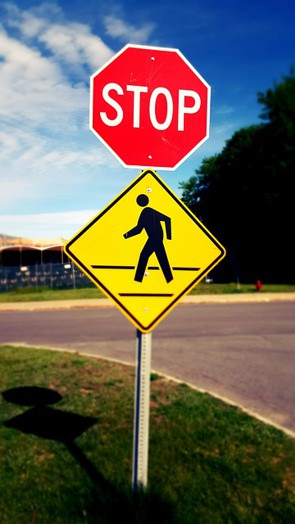
“The equivalent of more than three Boeing 737s full of people fell from the sky every month in 2022.” Smart Growth America.
This analogy highlights the tragedy of 7,508 pedestrian deaths, the highest number in 40 years. Among the deceased were those vulnerable to traffic violence—people with dwarfism, users of wheelchairs and mobility scooters, and those age 50 plus. Consequently, week 2 (June 9-15) of National Safety Month’s focus on Roadway Safety is the ideal time to zoom in on pedestrian safety.
Want to subscribe to receive blog updates sign up today!
As a person who fits all three of these vulnerable categories, I’m well aware of danger when crossing the street or walking behind cars in a parking lot. I’m invisible to drivers and can’t walk or ride fast enough to escape vehicles hurtling towards me or backing out of a parking space. The risk of harm is not exaggerated. I know two Past Presidents of Little People of America who were pedestrian accident victims: Mary was killed and Marge was seriously injured.
In 2024 alone, America’s media is replete with reports of fatal collisions between vehicles and pedestrians using a wheelchair or mobility scooter. Georgetown University research in 2015 revealed that crashes are 36 percent more likely to kill a pedestrian using a wheelchair than pedestrians on foot. This is possibly explained by the torso and head of a wheelchair user or Little Person being struck directly compared to a walking pedestrian being slammed in the thighs and pelvis area.
So let’s look at what makes pedestrians of short stature, traversing on wheels, or aging more vulnerable to traffic violence:
- More time to cross is needed and current traffic light timings are set to the average walking speed of a younger person without physical disabilities.
- It’s harder to be seen by drivers especially when lighting is poor.
- Inability to react as quickly as walking pedestrians.
- Wheelchair users are often forced to ride on streets when sidewalks are either nonexistent or in disrepair; or curb cuts are either absent or blocked by parked vehicles.
- Stiff joints and muscles make it harder to check traffic.
Smart Growth America has concluded that “This epidemic continues to grow worse because our nation’s streets are dangerous by design, designed primarily to move cars quickly at the expense of keeping everyone safe.”Yet Title II of the Americans with Disabilities Act (ADA)—a comprehensive disabilities civil rights law—is designed to prohibit disability discrimination by states and local governments. As a result, such entities must design roads, sidewalks, curbs, crosswalks, and other infrastructure, to be accessible to people with disabilities.
In addition to vulnerable pedestrians following road rules and taking precautions to be seen by drivers, let’s advocate for accessible communities as follows:
- Contact your Public Works Department about sidewalks, signals, and signs needing improvement.
- Write a letter to the editor of your newspaper.
- Contact your Mayor, City Council, or County Commission and ask for a Walkable Community Program and ADA enforcement.
- Join a citizen’s pedestrian committee.
- Whatever else comes to mind.
Image credit: Pexels from Pixabay
This post was informed by the following resources:
- National Safety Month. National Safety Council. 2024. https://www.nsc.org/work-safety/get-involved/national-safety-month
- Dangerous by Design 2024. Smart Growth America. https://smartgrowthamerica.org/dangerous-by-design/
- Emergency Department Visits for Pedestrians Injured in Motor Vehicle Traffic Crashes — United States, January 2021–December 2023. May 2, 2024. Centers for Disease Control and Prevention. https://www.cdc.gov/mmwr/volumes/73/wr/mm7317a1.htm
- Pedestrian Safety. National Highway Traffic Safety Administration. https://www.nhtsa.gov/road-safety/pedestrian-safety
- Pedestrian Fatalities by State. June 2023. Governors Highway Safety Association. https://drive.google.com/file/d/1FqMVhIywFiQ.i2cj6j4ek2BABhpvcLiHn/view
- Rules of the Road for Motorized Wheelchair Users | Wheelchair Accidents and Injuries. October 17, 2022. https://robinettelaw.com/blog/rules-of-the-road-for-motorized-wheelchair-users-wheelchair-accidents-and-injuries/
- Majority of Car-Pedestrian Deaths Happen to Those in Wheelchairs, Often at Intersections. Georgetown University Medical Center. 2015. https://gumc.georgetown.edu/news-release/majority-of-car-pedestrian-deaths-happen-to-those-in-wheelchairs-often-at-intersections/
You may also want to read:
- Angela Muir Van Etten. “STAY SAFE: Avoid Slips, Trips, and Falls.” Blog post. June 19, 2023. https://angelamuirvanetten.com/stay-safe-avoid-slips-trips-and-falls/
